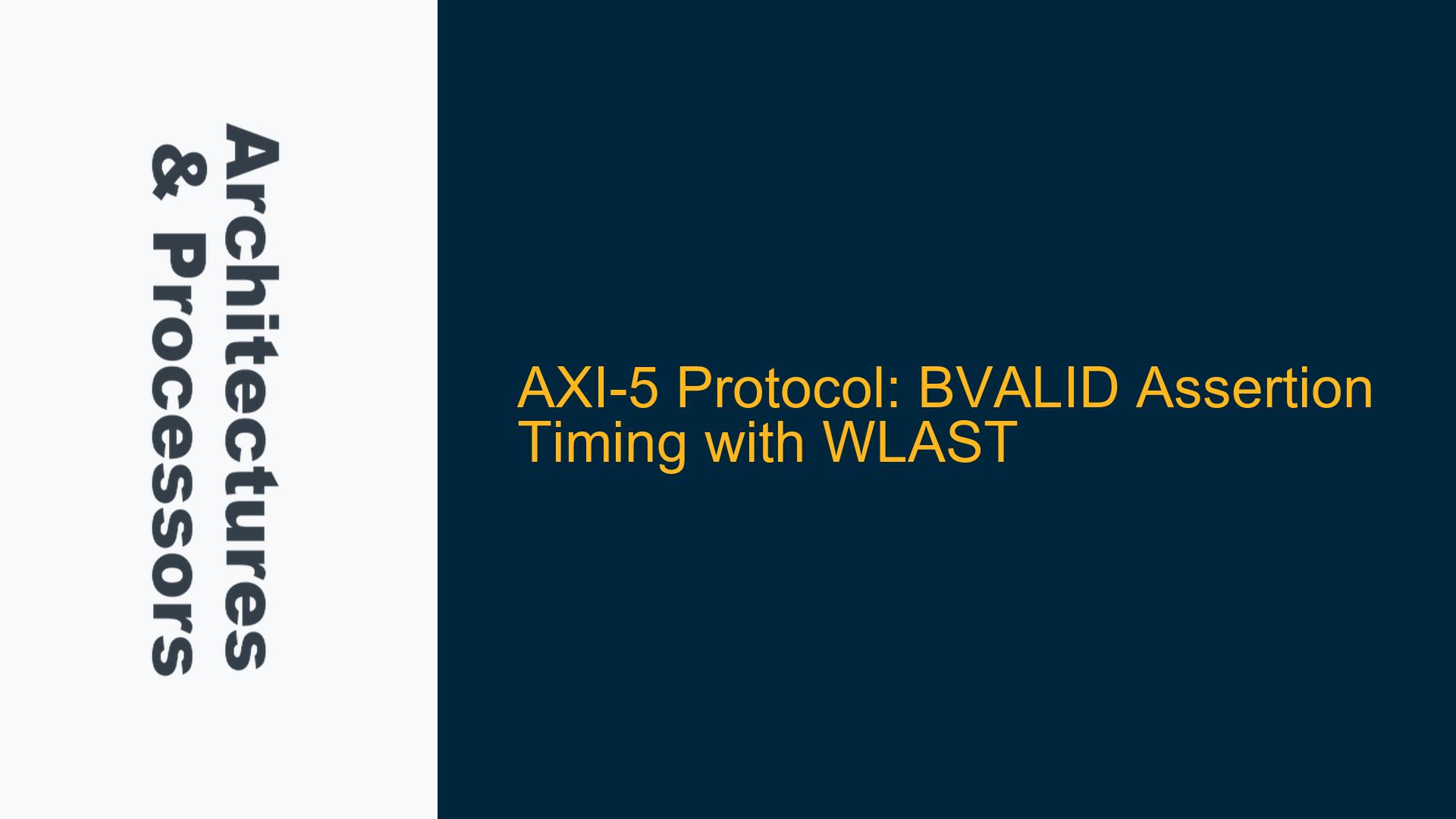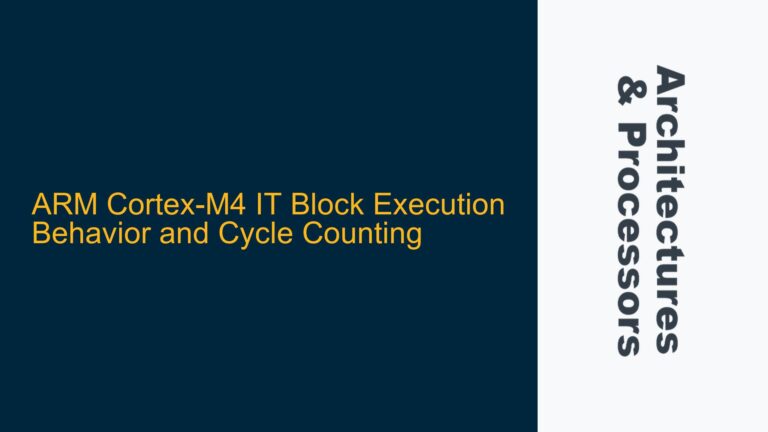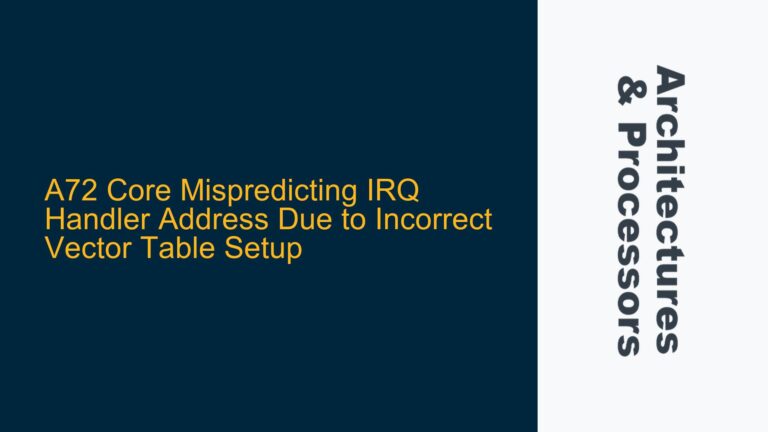AXI-5 Write Transaction Response Timing Constraints
The AMBA AXI-5 protocol defines strict timing requirements for write transactions, particularly concerning the assertion of the BVALID signal relative to WLAST. The core issue revolves around whether BVALID can be asserted in the same clock cycle as WLAST during a write transaction. According to the AXI-5 specification (version K, section A3.5.1), the subordinate must wait for WLAST to be asserted before asserting BVALID. This requirement ensures that the write response (BRESP) is only signaled after the last data transfer of a write transaction. However, the specification does not explicitly state whether BVALID and WLAST can be asserted simultaneously, leading to ambiguity in implementation.
The timing relationship between WLAST, WVALID, WREADY, and BVALID is critical for ensuring correct protocol compliance. WLAST indicates the final data transfer in a write transaction, while WVALID signifies that the write data is valid. WREADY, asserted by the subordinate, confirms that the data has been accepted. BVALID, asserted by the subordinate, signals the availability of the write response. The key question is whether BVALID can be asserted in the same cycle as WLAST, or if it must be delayed by at least one clock cycle.
The AXI-5 protocol mandates that the subordinate must sample WLAST and WVALID on the rising edge of ACLK when WREADY is also high. Only after this sampling can BVALID be asserted. This requirement implies that there must be at least a one-cycle delay between the assertion of WLAST/WVALID and the assertion of BVALID. Asserting BVALID in the same cycle as WLAST would violate this timing constraint, as the subordinate would not have had the opportunity to sample WLAST and WVALID.
Misinterpretation of WLAST and WVALID Signaling
One of the primary causes of confusion in this scenario is the misinterpretation of the roles of WLAST and WVALID in the AXI-5 protocol. WLAST is often misunderstood as an independent signal that can be asserted at any time during a write transaction. However, WLAST is only meaningful when accompanied by WVALID. WLAST indicates the final data transfer, but it must be asserted concurrently with WVALID to be valid. This relationship is crucial for understanding the timing constraints of BVALID assertion.
Another common misconception is that WLAST can be asserted before the final data transfer, as long as it is eventually paired with WVALID. While WLAST can be asserted early, it only becomes valid when WVALID is also high. This behavior can lead to incorrect implementations where BVALID is asserted prematurely, assuming that WLAST alone is sufficient to trigger the write response. The protocol explicitly requires that the subordinate wait for both WLAST and WVALID to be asserted and sampled before asserting BVALID.
Additionally, the interaction between WREADY and WVALID/WLAST is often overlooked. WREADY, asserted by the subordinate, indicates that the write data has been accepted. The subordinate must ensure that WREADY is high when sampling WLAST and WVALID. Only after this condition is met can BVALID be asserted. Ignoring the role of WREADY in this sequence can result in timing violations and protocol non-compliance.
Implementing Correct BVALID Assertion Timing
To ensure compliance with the AXI-5 protocol, the following steps must be taken to implement the correct timing for BVALID assertion relative to WLAST:
First, the subordinate must monitor WLAST, WVALID, and WREADY during a write transaction. When WLAST and WVALID are both asserted, and WREADY is high, the subordinate must sample these signals on the rising edge of ACLK. This sampling confirms that the final data transfer has been accepted by the subordinate.
Second, after sampling WLAST, WVALID, and WREADY, the subordinate must wait for at least one clock cycle before asserting BVALID. This delay ensures that the write response is only signaled after the final data transfer has been completed. Asserting BVALID in the same cycle as WLAST would violate this requirement, as the subordinate would not have had the opportunity to confirm the completion of the write transaction.
Third, the subordinate must ensure that the write response (BRESP) is generated and made available before asserting BVALID. The BRESP signal indicates the status of the write transaction (e.g., OKAY, EXOKAY, SLVERR, or DECERR) and must be valid when BVALID is asserted. This step ensures that the write response is accurate and reflects the outcome of the completed write transaction.
To illustrate the correct timing sequence, consider the following table:
| Clock Cycle | WLAST | WVALID | WREADY | BVALID | Description |
|---|---|---|---|---|---|
| 1 | 0 | 1 | 1 | 0 | Intermediate data transfer |
| 2 | 1 | 1 | 1 | 0 | Final data transfer (WLAST and WVALID sampled) |
| 3 | 0 | 0 | 0 | 1 | BVALID asserted after one-cycle delay |
In this example, WLAST and WVALID are both asserted in clock cycle 2, and WREADY is high, indicating that the final data transfer has been accepted. BVALID is asserted in clock cycle 3, after a one-cycle delay, ensuring compliance with the AXI-5 protocol.
By following these steps, designers can ensure that their AXI-5 implementations adhere to the protocol’s timing requirements, avoiding potential issues related to premature BVALID assertion. This approach not only guarantees protocol compliance but also enhances the reliability and robustness of the system.






